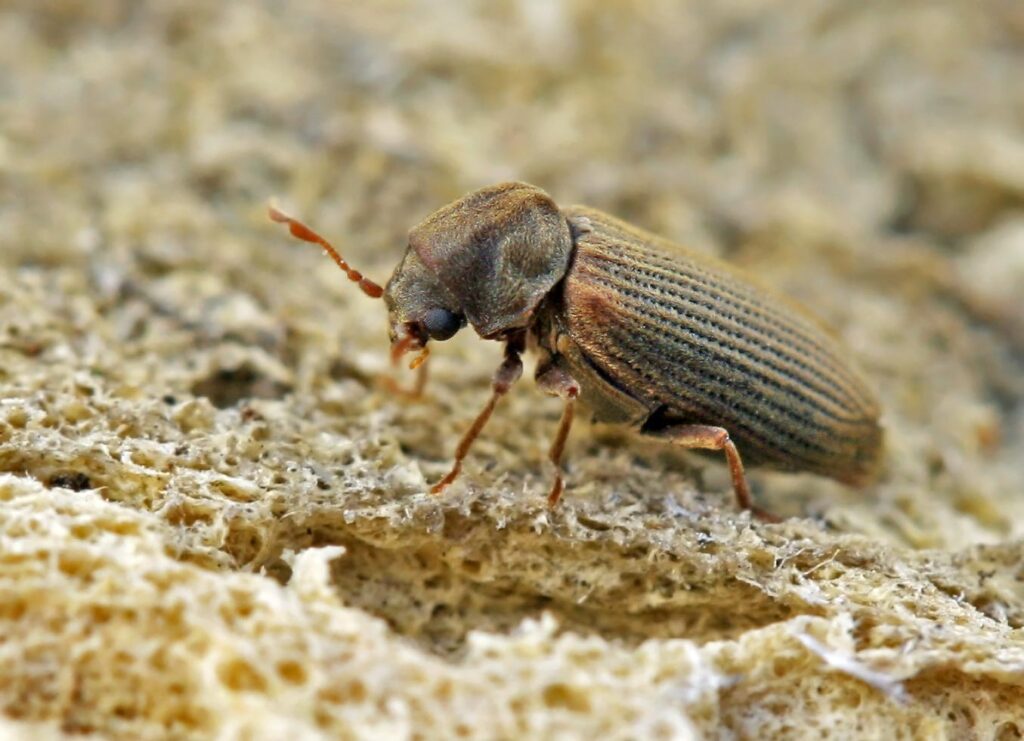Your home seems secure, your pantry well-stocked, and your furniture pristine. Yet beneath this peaceful facade, an invisible army of tiny invaders works tirelessly around the clock. These silent destroyers don’t announce their presence with dramatic fanfare or obvious warning signs. Instead, they methodically consume everything from your favorite wool sweater to that expensive wooden dining table, leaving behind only subtle clues of their devastating handiwork. Some have been perfecting their destructive craft for millions of years, evolving sophisticated strategies to infiltrate our most protected spaces. The damage they cause isn’t just financial – it’s deeply personal, affecting the very items we hold dear and the spaces we call home.
Carpet Beetles: The Fabric Destroyers
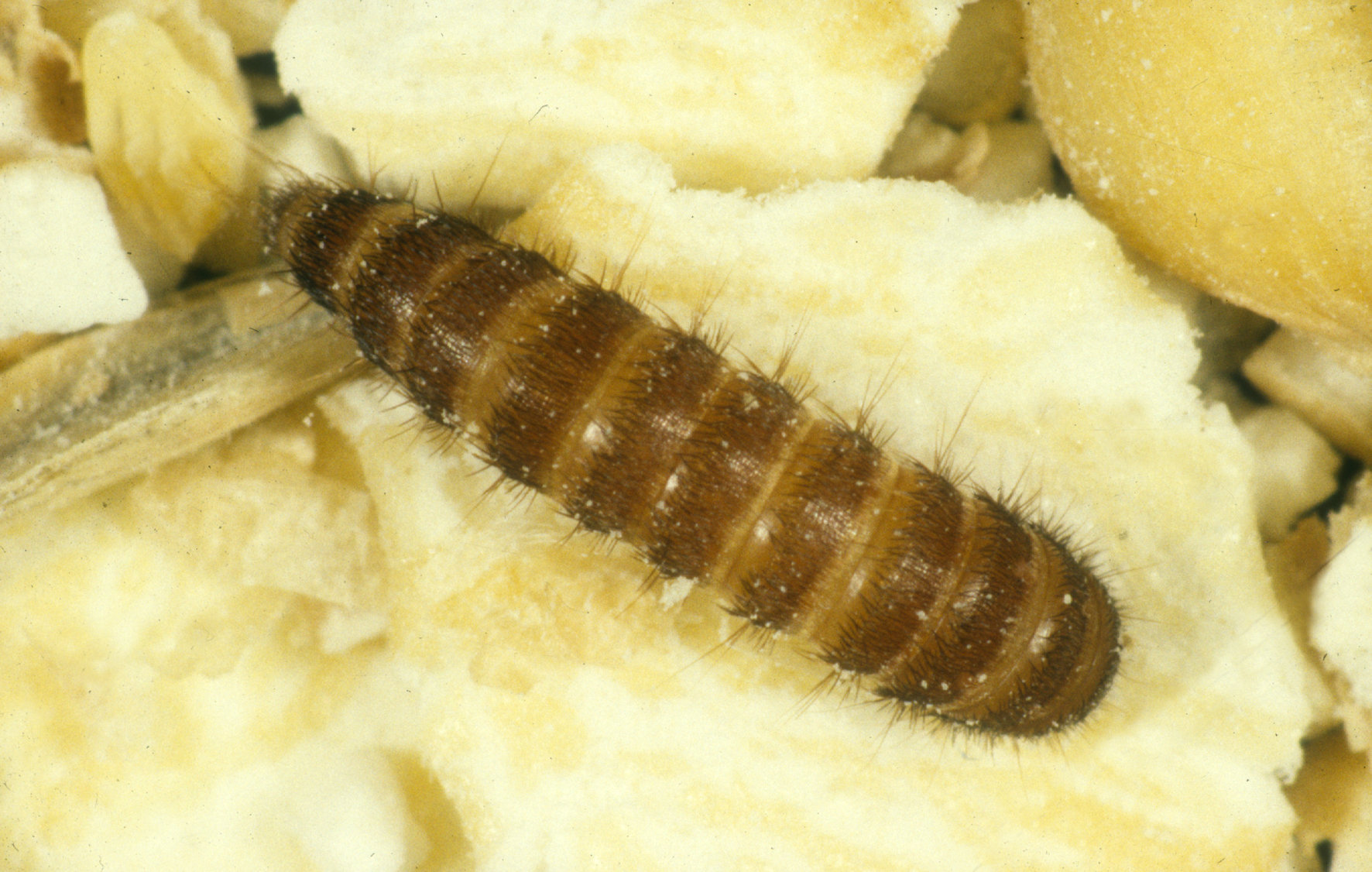
These tiny oval-shaped insects measure just 1/8 to 1/4 inch long, yet they pack an enormous punch when it comes to destroying natural fibers. Adult carpet beetles are actually harmless – it’s their larvae that cause the real devastation. The fuzzy, brown larvae feed voraciously on wool, silk, leather, and even synthetic blends that contain natural fibers.
What makes carpet beetles particularly insidious is their ability to remain completely undetected for months. They prefer dark, undisturbed areas like closets, under furniture, and inside storage boxes. You might discover their presence only when you pull out a favorite sweater to find it riddled with irregular holes. These pests can survive for extended periods without food, making them incredibly resilient once they establish themselves in your home.
Clothes Moths: Silent Wardrobe Assassins
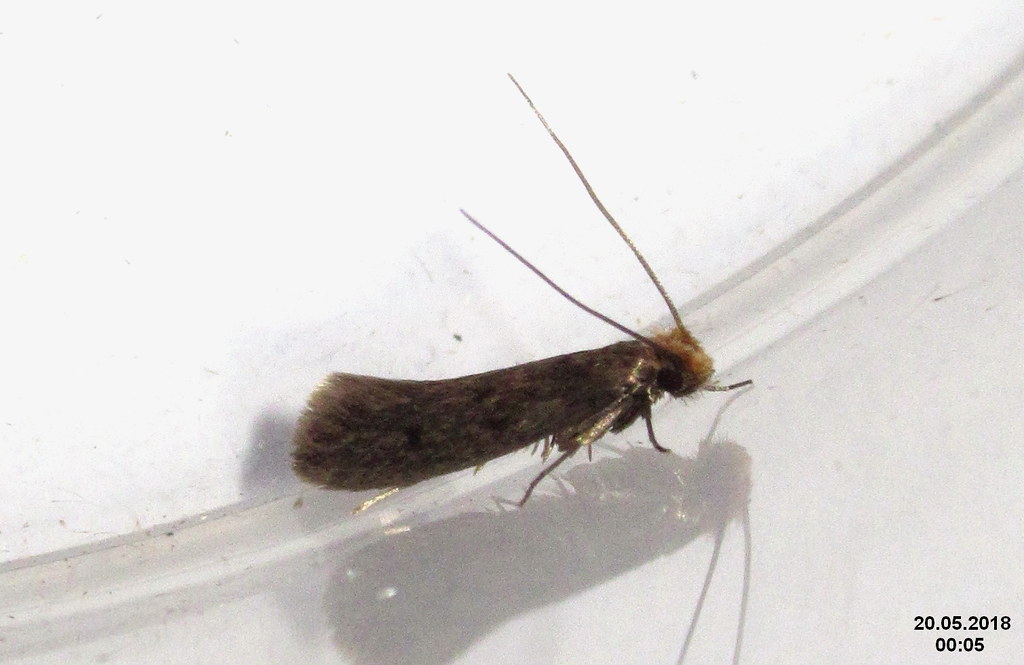
The common clothes moth transforms your cherished garments into a Swiss cheese nightmare. These golden-colored moths with a 1/2-inch wingspan seem innocent enough, but their larvae are merciless fabric consumers. Unlike their plant-eating cousins, clothes moth larvae have evolved to digest keratin, the protein found in wool, fur, feathers, and even human hair.
The female moth seeks out the darkest corners of your closet to lay her eggs, often choosing items that haven’t been worn recently. Her larvae emerge with an insatiable appetite, creating small holes that gradually expand as they grow. The damage often goes unnoticed until you’re preparing for a special occasion, only to discover your most expensive garments have been systematically destroyed.
Drugstore Beetles: Pharmacy and Pantry Invaders
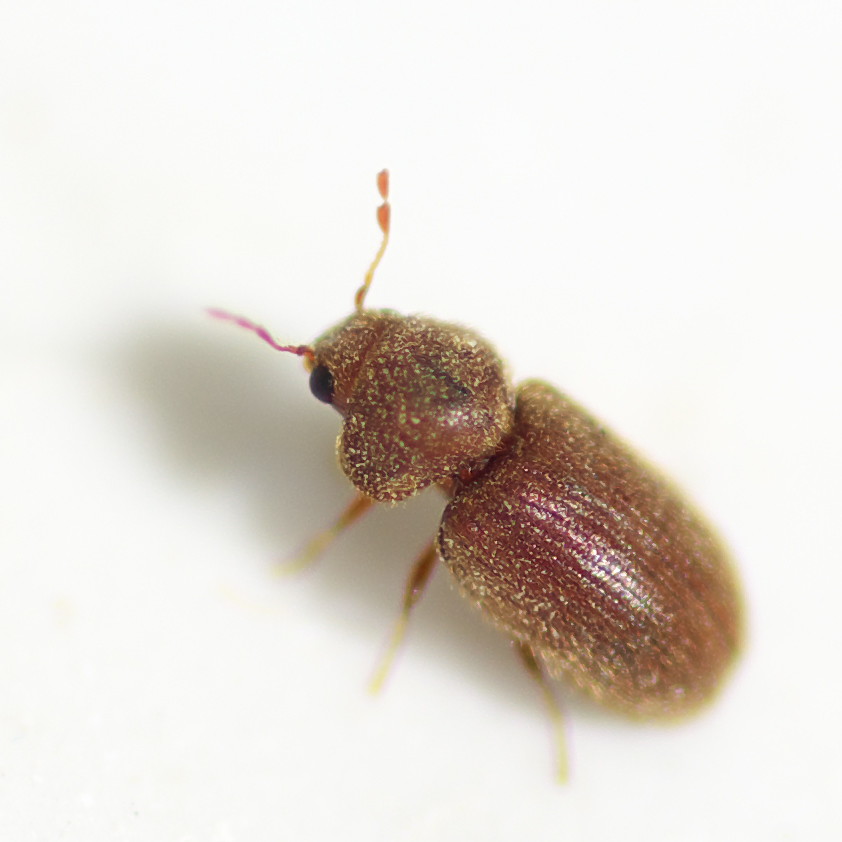
These small brown beetles earned their name from their historical habit of infesting old-fashioned pharmacies, but they’ve since expanded their territory to include your kitchen pantry. Measuring only 1/8 inch long, drugstore beetles are remarkably versatile eaters. They consume everything from prescription medications and spices to dried flowers and even books.
What sets drugstore beetles apart is their incredible ability to bore through packaging materials. They can chew through plastic bags, cardboard boxes, and even thin aluminum foil. Their larvae create intricate tunnel systems inside food products, leaving behind a fine powdery residue that’s often the first sign of infestation. These beetles are particularly fond of pet food, making them a common problem for pet owners.
Cigarette Beetles: The Tobacco Specialists
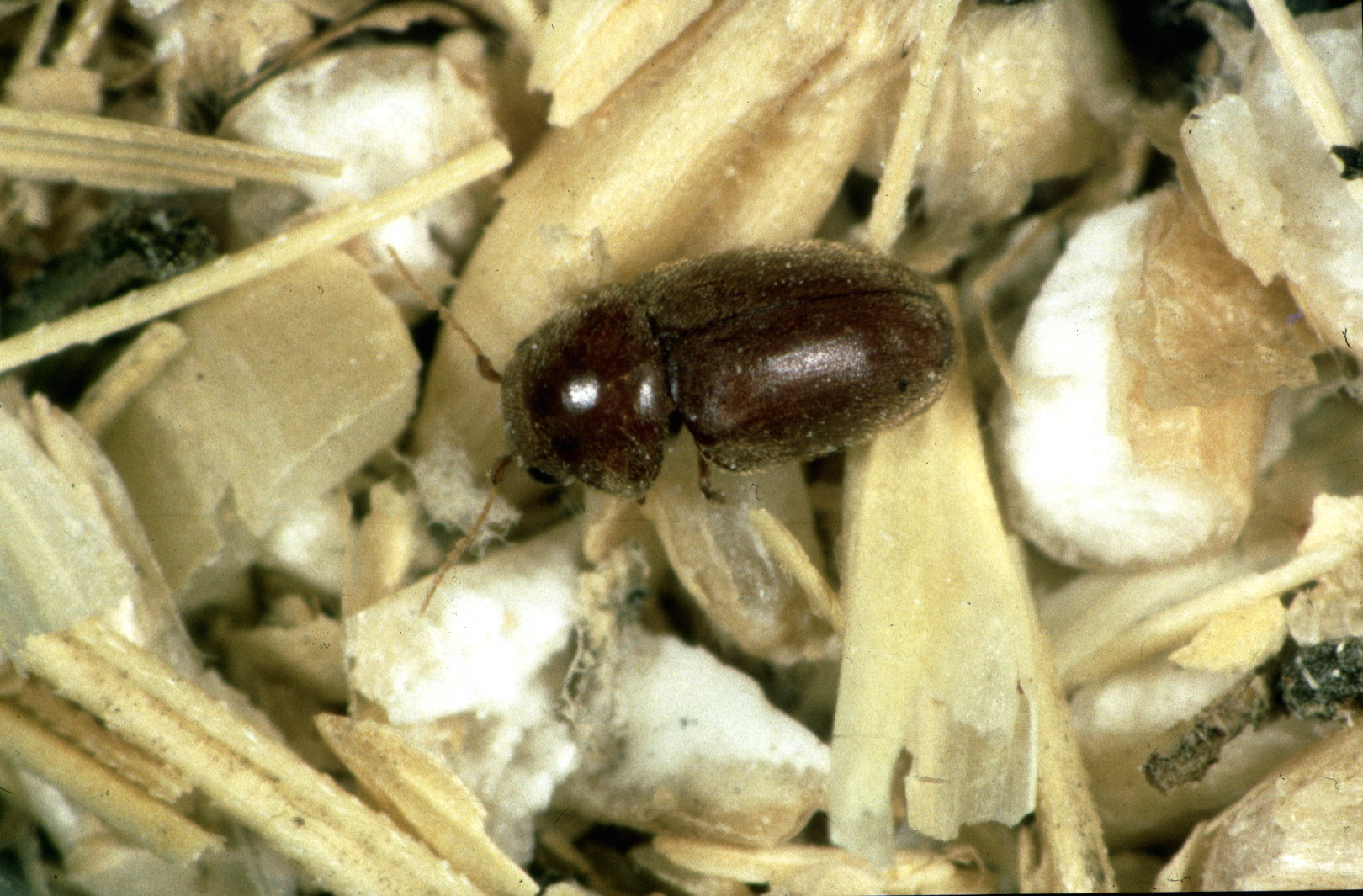
Originally named for their preference for tobacco products, cigarette beetles have adapted to modern life by expanding their diet to include dried foods, spices, and even potpourri. These tiny reddish-brown beetles measure just 1/8 inch long but can cause significant damage to stored products. Their larvae are particularly destructive, creating extensive networks of holes in infested items.
The cigarette beetle’s life cycle makes them especially problematic because they can reproduce rapidly in warm environments. A single female can lay up to 100 eggs, which hatch into hungry larvae that immediately begin feeding. They’re often found in spice cabinets, where they can contaminate entire collections of expensive seasonings. Their presence is usually detected by the appearance of small holes in packaging and tiny beetles crawling around storage areas.
Powderpost Beetles: The Wood Whisperers
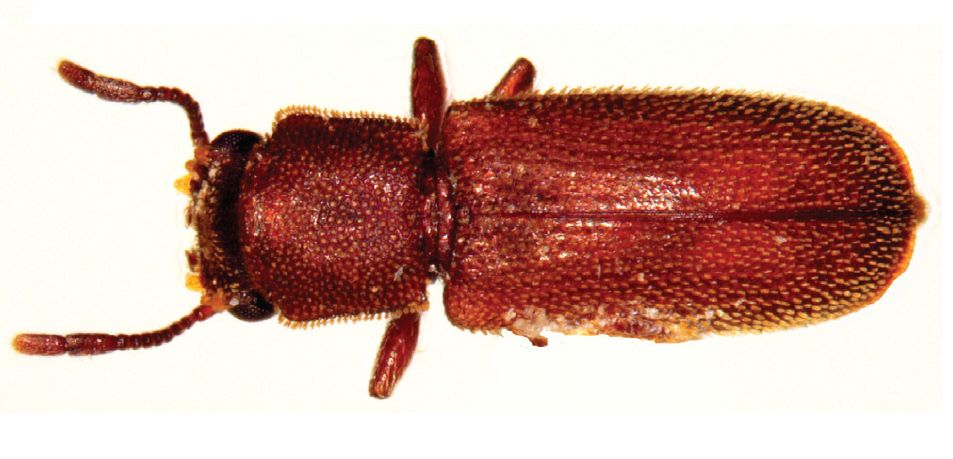
These beetles have mastered the art of invisible destruction, living entirely within wooden structures while slowly reducing them to powder. Adult powderpost beetles are small, ranging from 1/8 to 1/4 inch long, with elongated bodies that allow them to navigate through wood grain easily. Their larvae spend months or even years tunneling through hardwood, creating an extensive network of galleries.
The most unsettling aspect of powderpost beetles is how they can remain completely undetected until structural damage becomes severe. They prefer hardwoods like oak, ash, and hickory, making antique furniture and flooring particularly vulnerable. The only external sign of their presence is often tiny holes about the size of a pinhead, accompanied by small piles of fine, flour-like powder beneath infested wood.
Furniture Beetles: Living Room Destroyers

Furniture beetles specialize in attacking softwood furniture, particularly pieces made from pine, fir, and spruce. These small brown beetles, measuring about 1/8 inch long, can completely hollow out wooden furniture from the inside. Their larvae spend up to three years developing within the wood, creating extensive tunnel systems that significantly weaken structural integrity.
The damage caused by furniture beetles is often irreversible by the time it’s discovered. Unlike other wood-boring insects, they can attack both seasoned and green wood, making no furniture safe from their appetite. Antique collectors particularly dread these pests because they can destroy irreplaceable pieces. The beetles prefer wood with high moisture content, making basement and attic storage areas prime targets for infestation.
Silverfish: The Paper Menace
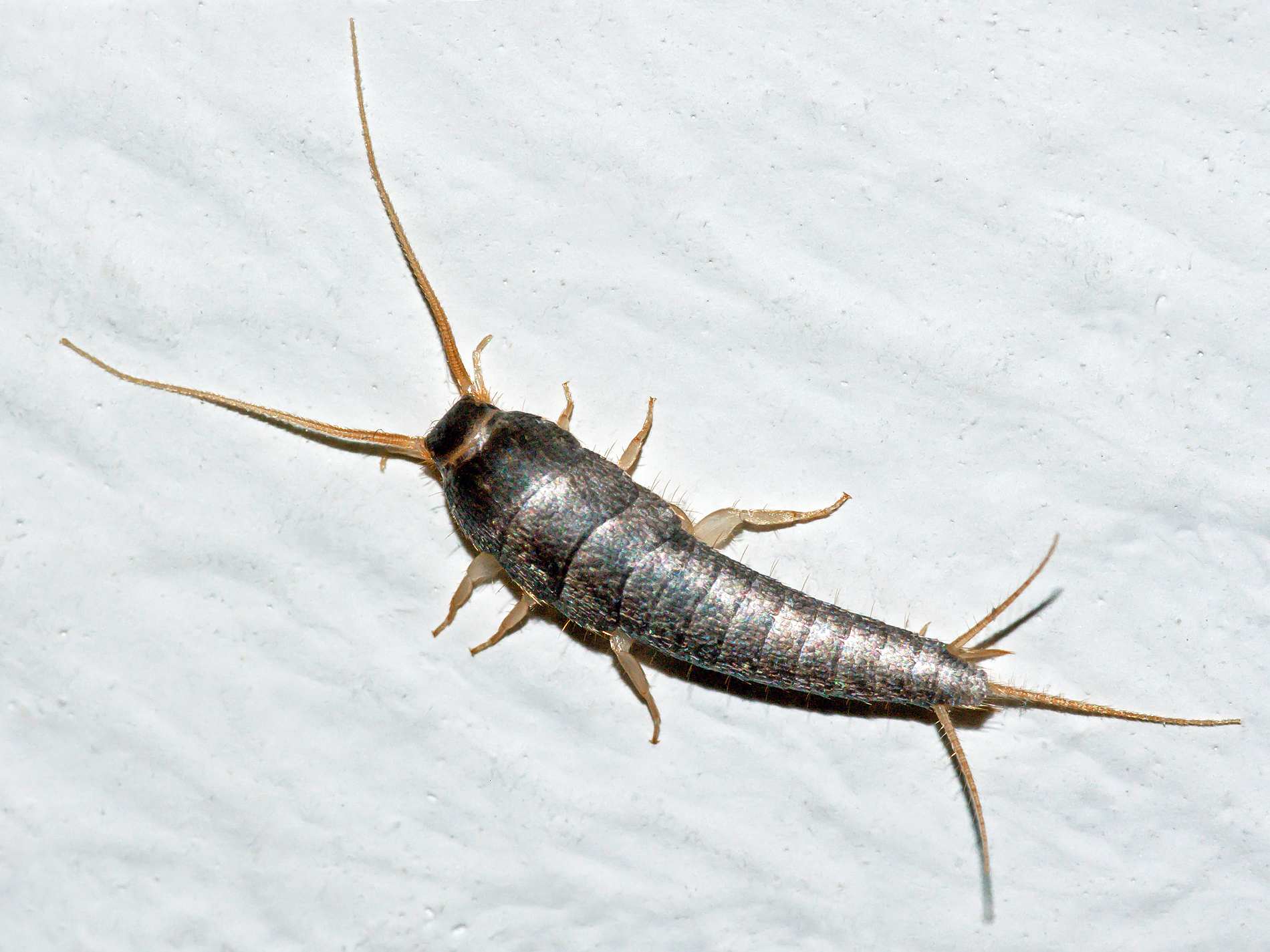
These wingless, silvery insects have been sharing human habitats for thousands of years, developing a taste for the starchy materials we surround ourselves with. Silverfish can live for up to eight years, giving them plenty of time to cause extensive damage to books, wallpaper, photographs, and documents. Their ability to digest cellulose makes them particularly destructive to paper products.
What makes silverfish especially problematic is their preference for humid environments and their nocturnal habits. They emerge at night to feed, making them difficult to detect until damage becomes apparent. These insects can survive for months without food, making them incredibly resilient once they establish themselves. They’re particularly attracted to items with high starch content, including book bindings, wallpaper paste, and even some synthetic fabrics.
Booklice: The Literary Destroyers
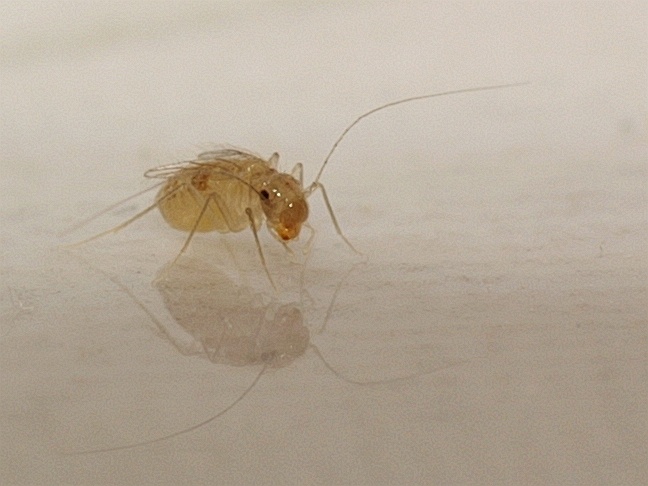
Despite their name, booklice aren’t actually lice – they’re tiny insects that feed on mold, fungi, and organic materials found in books and paper products. These pale, soft-bodied insects measure only 1/16 inch long, making them nearly invisible to the naked eye. They thrive in humid conditions and can cause significant damage to libraries, archives, and personal book collections.
Booklice damage goes beyond mere feeding – they also leave behind stains and create conditions that promote mold growth. Their preference for high humidity means they’re often found in basements, attics, and poorly ventilated storage areas. These insects can reproduce rapidly, with females laying up to 100 eggs at a time. The damage they cause is often subtle at first, appearing as small brown spots or discoloration on pages.
Varied Carpet Beetles: The Eclectic Eaters
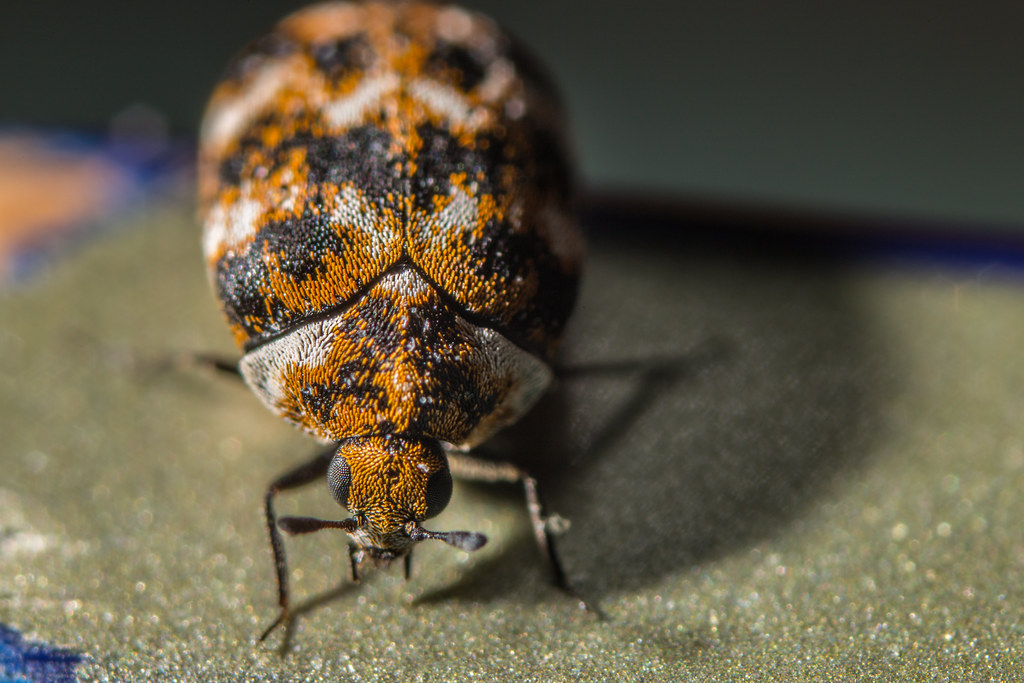
These beetles are perhaps the most versatile household pests, with a diet that includes everything from natural fibers to dried flowers and even dead insects. Varied carpet beetles are slightly larger than their common carpet beetle cousins, measuring up to 1/4 inch long. Their larvae are particularly destructive, equipped with bristly hairs that help them navigate through fabric fibers.
The varied carpet beetle’s adaptability makes them especially difficult to control. They can survive on a wide range of materials, from pet hair and lint to bird feathers and museum specimens. Their ability to feed on such diverse materials means they can establish themselves in almost any environment. These beetles are particularly problematic in museums and natural history collections, where they can destroy irreplaceable specimens.
Firebrats: The Heat-Seeking Fabric Lovers
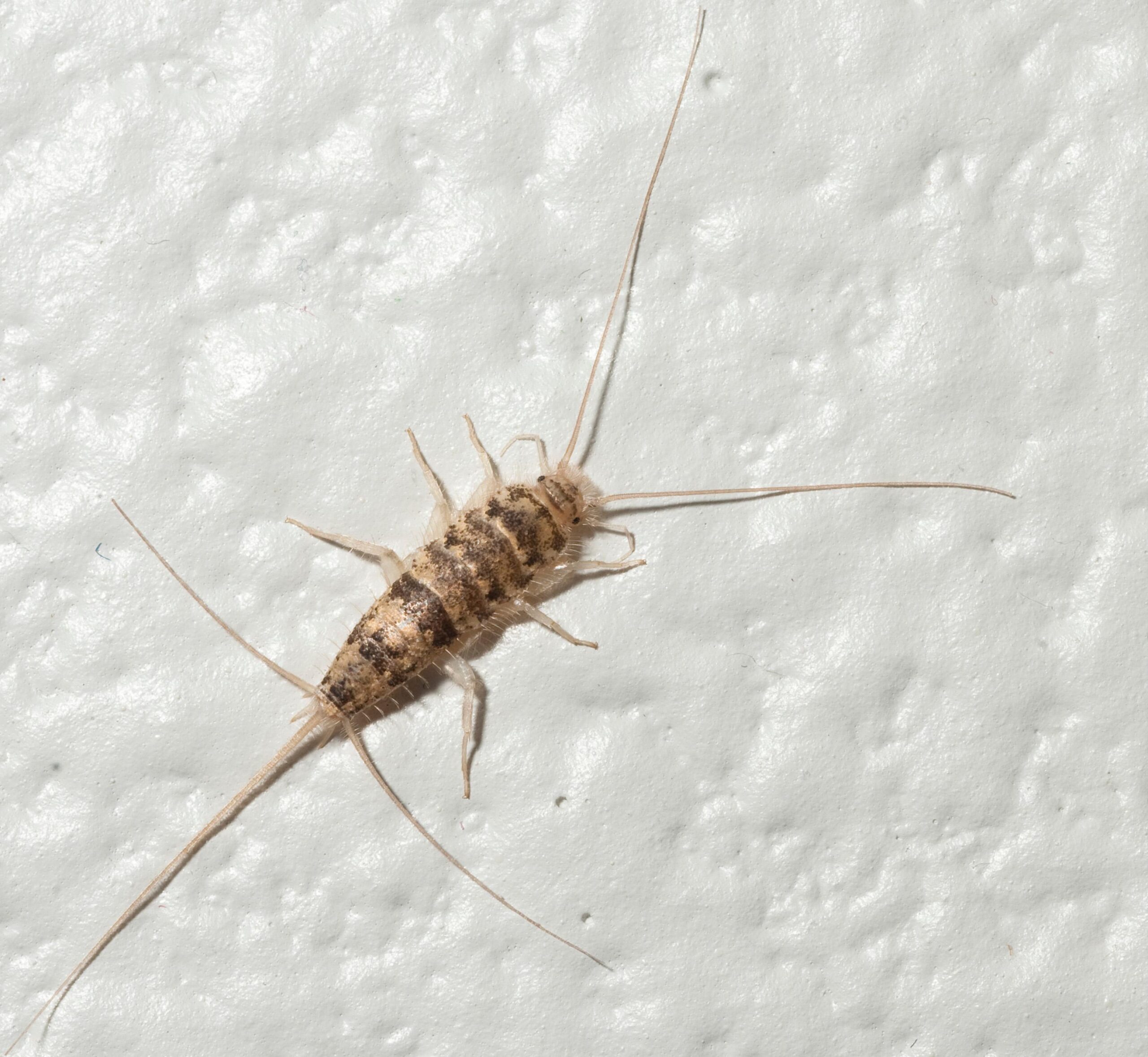
Firebrats are the heat-loving cousins of silverfish, thriving in temperatures above 90°F. These primitive insects prefer warm, humid environments like boiler rooms, ovens, and heated buildings. Their diet consists primarily of starches and carbohydrates, but they’ll also consume fabric, paper, and even glue. Their preference for high temperatures makes them particularly problematic in commercial kitchens and industrial facilities.
Unlike silverfish, firebrats are more active during warm weather and can reproduce more rapidly in heated environments. They can cause significant damage to books, papers, and fabrics stored in warm areas. Their ability to survive extreme temperatures makes them particularly challenging to control using conventional methods. These insects can live for up to four years, giving them ample time to cause extensive damage.
Hide Beetles: The Leather Specialists
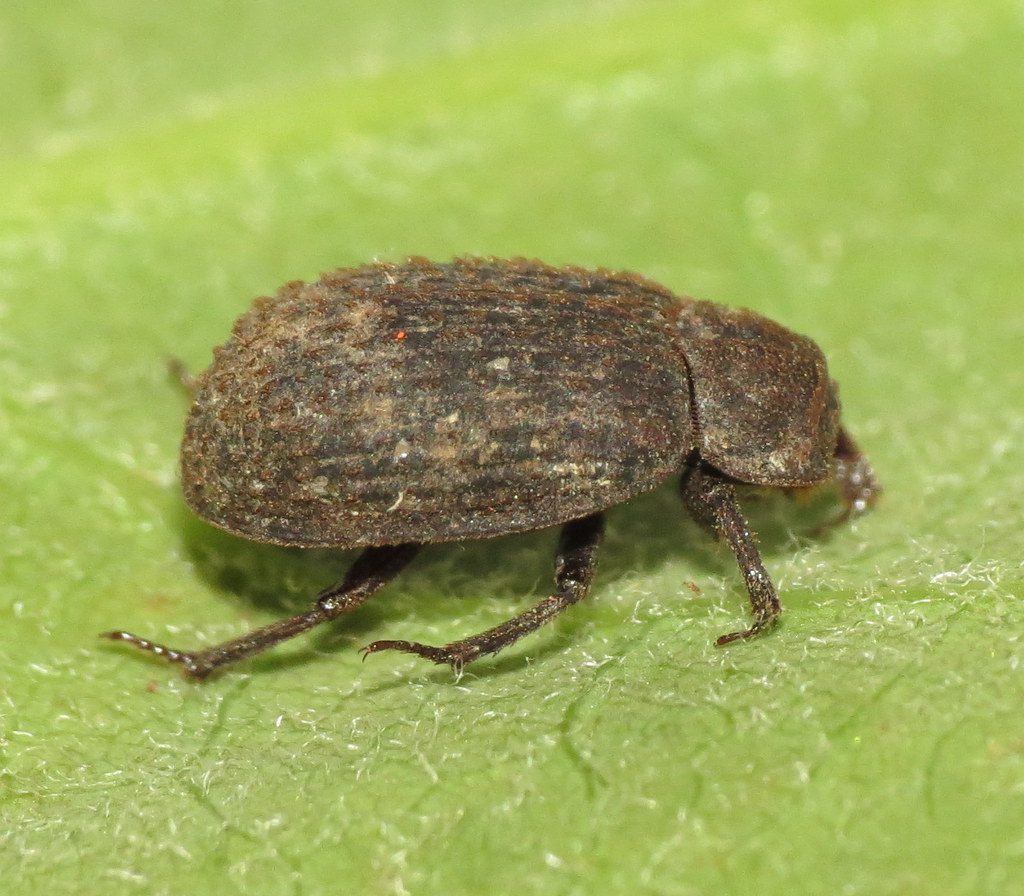
Hide beetles have evolved specifically to consume animal products, making them particularly destructive to leather goods, fur, and taxidermy specimens. These dark brown to black beetles measure about 1/4 inch long and are equipped with powerful mandibles capable of chewing through tough materials. Their larvae are equally destructive, feeding on the same materials as the adults.
The hide beetle’s preference for animal products makes them a significant problem for leather manufacturers, fur storage facilities, and natural history museums. They can completely destroy leather goods, leaving behind only brittle remnants. Their ability to survive for long periods without food makes them particularly problematic in storage facilities. These beetles are also attracted to pet food and can establish large colonies in areas where animal products are stored.
Sawtoothed Grain Beetles: The Pantry Infiltrators
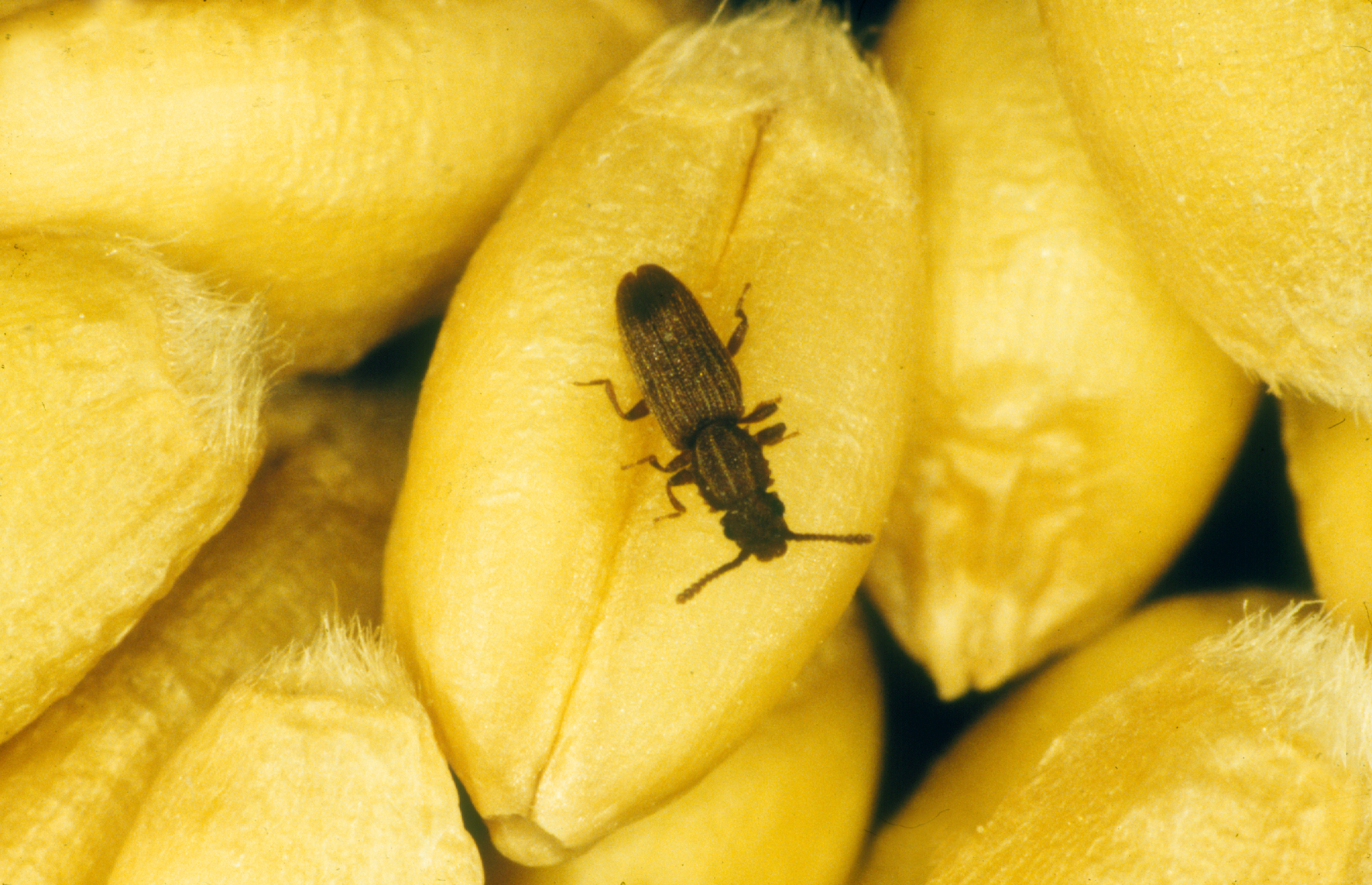
These flat, brown beetles are perfectly designed for infiltrating food packaging, with their characteristic sawtooth-like projections along the sides of their thorax. Measuring only 1/8 inch long, sawtoothed grain beetles can squeeze through incredibly small openings in packaging. They’re particularly fond of cereals, crackers, dried fruits, and nuts, but will consume almost any stored food product.
The sawtoothed grain beetle’s ability to reproduce rapidly makes them one of the most problematic pantry pests. A single female can lay up to 300 eggs, which hatch into larvae that immediately begin feeding on stored products. Their presence is often detected by the appearance of small beetles crawling around food storage areas or by finding them in opened packages. These beetles can survive for months without food, making them incredibly persistent once they establish themselves in a pantry.
Conclusion
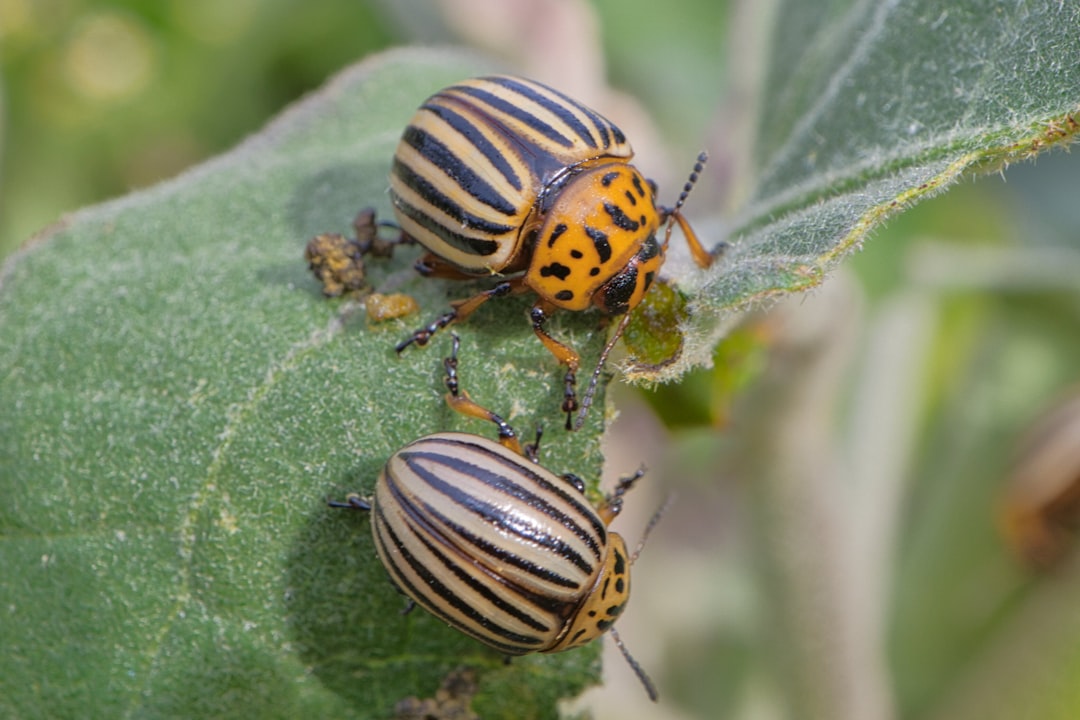
The silent invasion of these 11 insects represents a constant challenge for homeowners, businesses, and institutions worldwide. Their ability to remain undetected while causing extensive damage makes them particularly formidable opponents. From the clothes moth that destroys your favorite sweater to the powderpost beetle that can compromise the structural integrity of your home, these tiny destroyers remind us that size doesn’t determine impact.
Understanding these insects’ behaviors, preferences, and life cycles is crucial for effective prevention and control. Regular inspection of storage areas, proper humidity control, and immediate action upon discovery can help minimize damage. The key to protecting your belongings lies in vigilance and early detection, as most of these insects are far easier to control before they establish large populations.
Perhaps most importantly, these insects remind us of nature’s incredible adaptability and persistence. They’ve evolved alongside humans for thousands of years, developing increasingly sophisticated strategies to exploit our environments. Which of these silent destroyers surprised you the most with their destructive capabilities?

